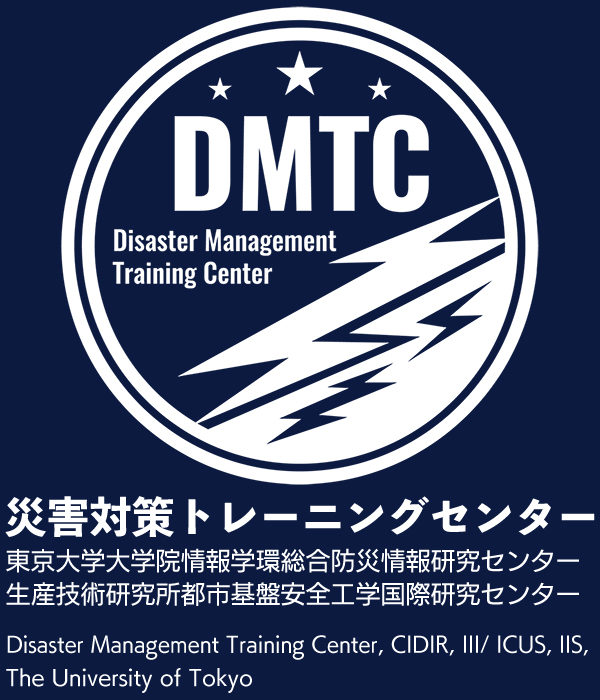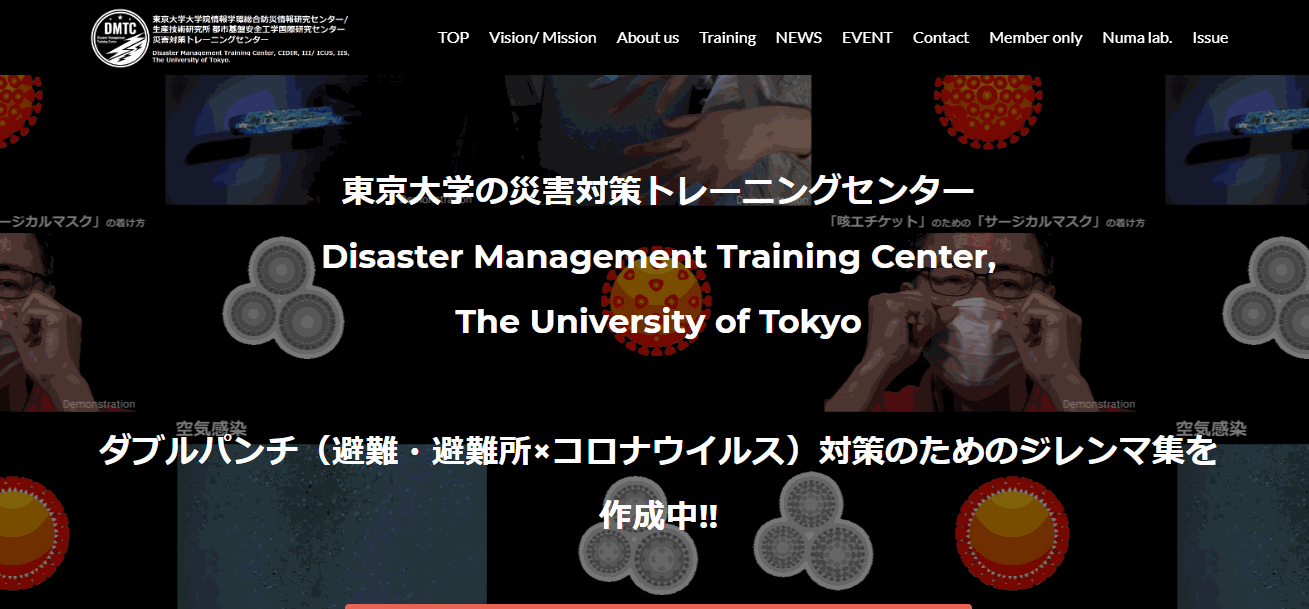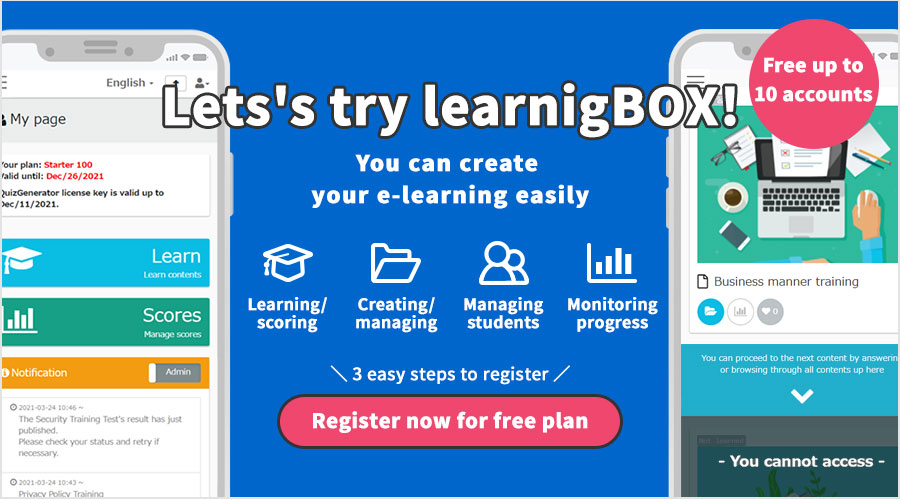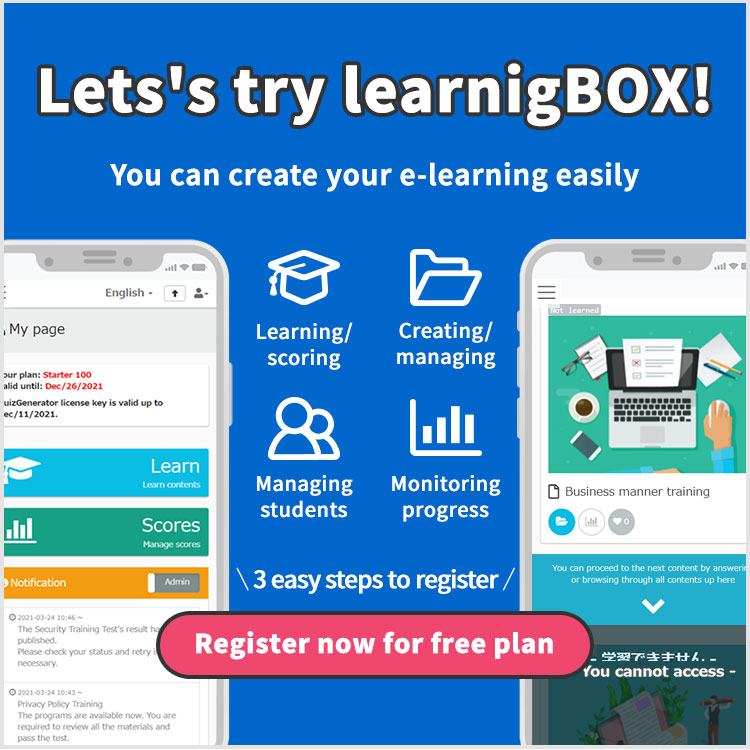Develop human resources who can act in actual disaster situations by utilizing systematic knowledge of disaster countermeasures.
We have introduced e-learning to provide an environment where people can continue to learn knowledge and practical skills related to disaster countermeasures.
Disaster Management Training Center,
The University of Tokyo
In order to protect as many lives as possible from disasters and to ensure the continued functioning of society
By providing systematic and practical training on disaster preparedness
We train people who can contribute to a sustainable society by making a difference in the efforts and awareness of each individual who supports society.
International Research Center for Urban Safety Engineering Disaster Prevention Process Engineering
Associate Professor, Doctor (Engineering) Dr. Munetsumi Numata
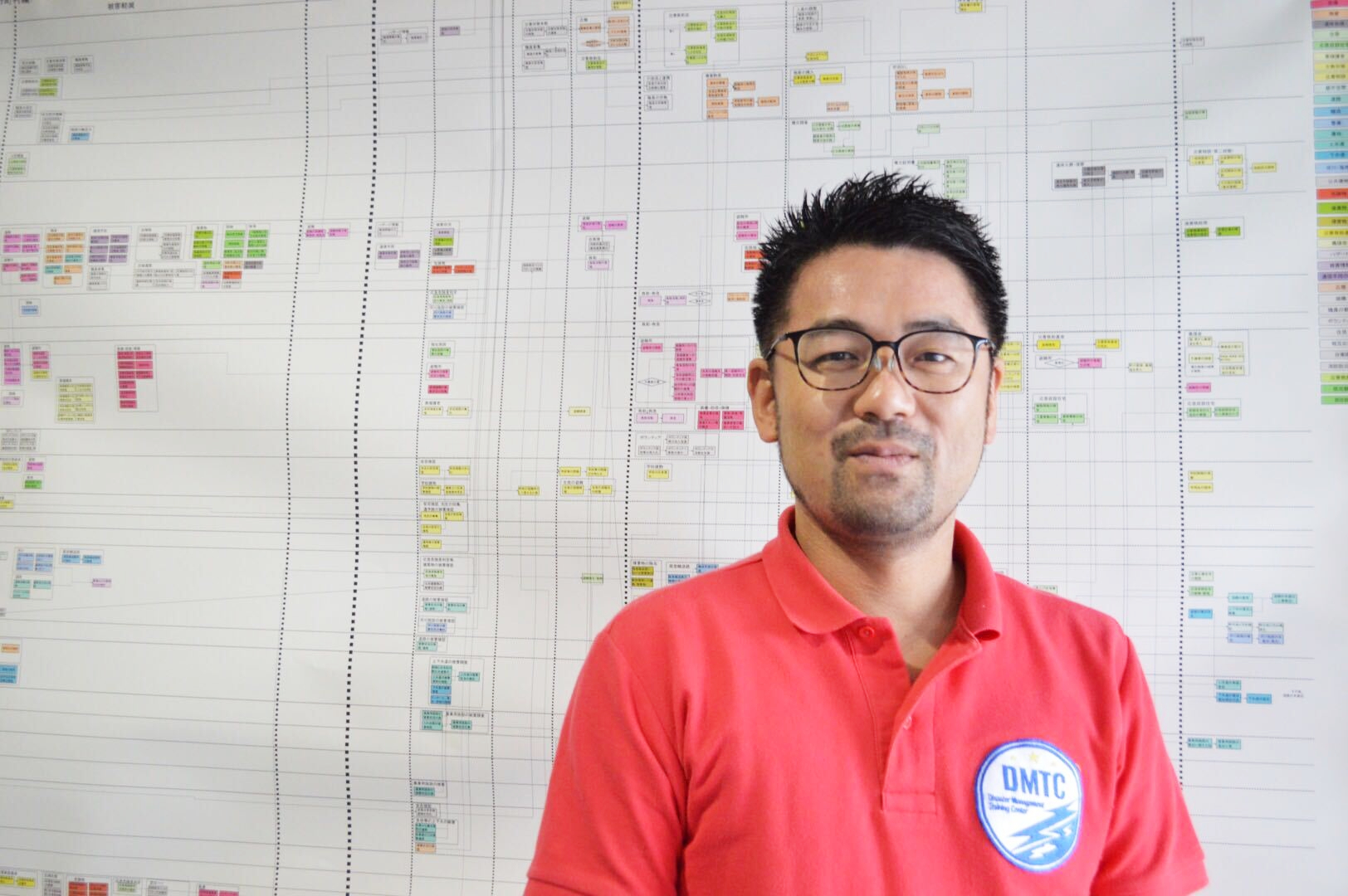
Customer Profile
Disaster Management Training Center, The University of Tokyo
Disaster Management Training Center,The University of Tokyo
Business Description
- We will promote research on disaster response, training, and education so that people can acquire the necessary knowledge, skills, and know-how required in times of disaster through practical training, and provide the results of this research to society as a new educational service.
Could you tell us about the specifics of Professor Numata's laboratory?
We study disaster management mainly from a wide range of perspectives, from engineering to social science, and develop training programs and provide training based on the results of our research. This means that local governments, private companies, and local residents in general can learn about disaster management. My background is in civil engineering, so I am involved in a wide range of research related to disaster preparedness, including research on civil engineering structures such as infrastructure and lifelines, as well as research on evacuation centers, medical care, welfare, and information systems.
In this context, we have defined 47 different frameworks for disaster management operations in this way.
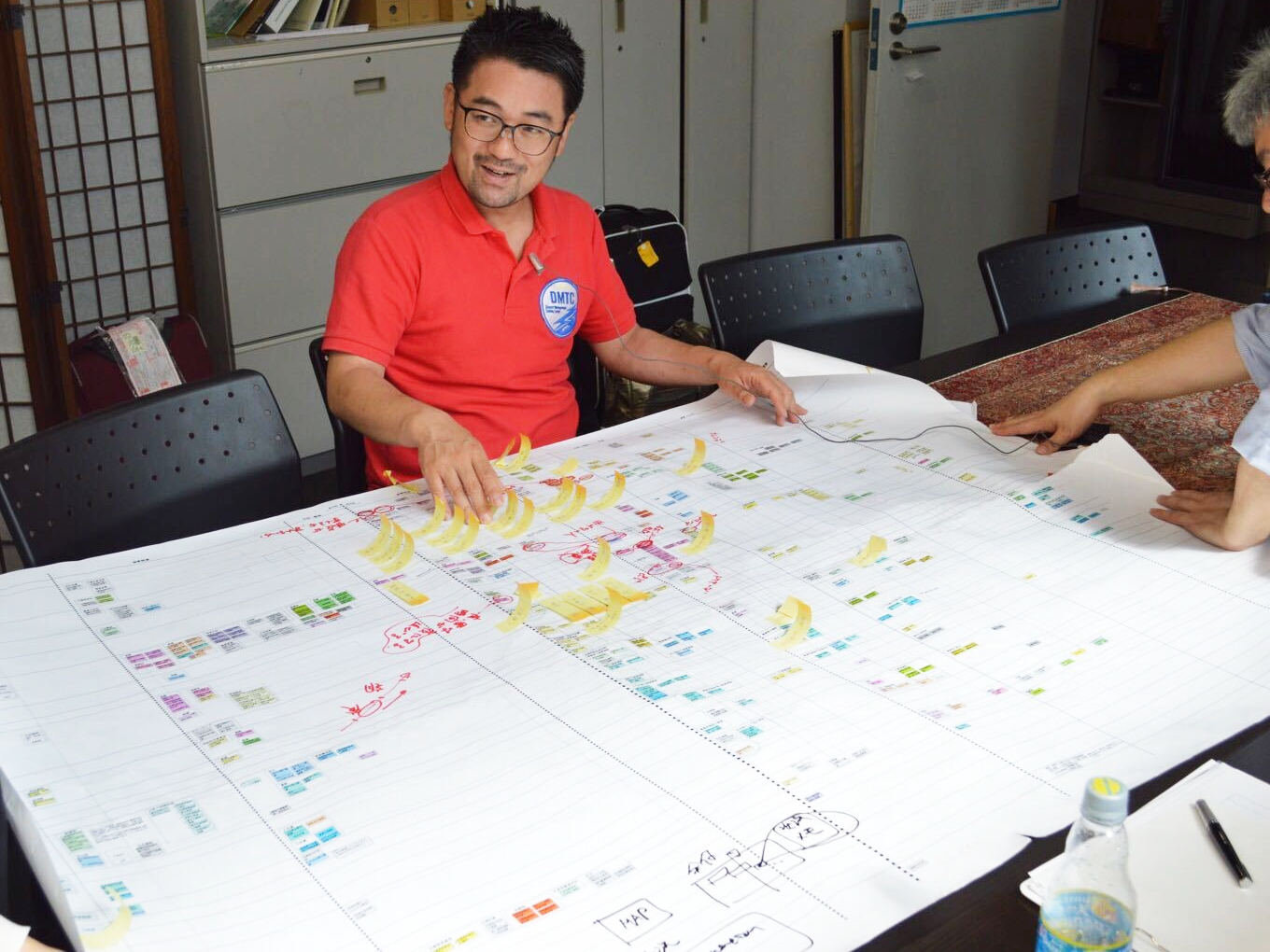
When you are a company, you create a business flow, right? This is like a disaster countermeasure version of that. For each of the 47 major categories, detailed tasks are described in this way.
The 47 categories refer to such things as evacuation center management, waste disposal, road restoration, and building surveys. For each of these 47 major categories of work, for example, the evacuation shelter management category is subdivided into about 10 tasks. The 47 categories form the basis of the flowchart, and while pursuing the ideal form of the flowchart, we are also conducting research on various themes, such as improving the efficiency of each subdivision.
What we are doing now, at the Disaster Management Training Center, is to study the operations of all 47 types, first to get an overall picture, and then to go deeper into each of them individually, more specifically, for example, what are the key points and what is necessary in evacuation center management. Due to the effects of the new coronavirus, it is necessary to organize the work of evacuation center management, and evacuation center management alone is subdivided into about 300 tasks.
We have developed a system called BOSS (Disaster Response Process Management System), which creates flowcharts to facilitate the smooth success of a wide range of responses. We will have people actually use BOSS, and when a disaster occurs, we will be able to grasp the overall picture and issue specific instructions.
The Disaster Management Training Center is based on the idea that we should teach this base well.
We also operate the Disaster Management Training Center with a variety of companies, each with their own specialties.
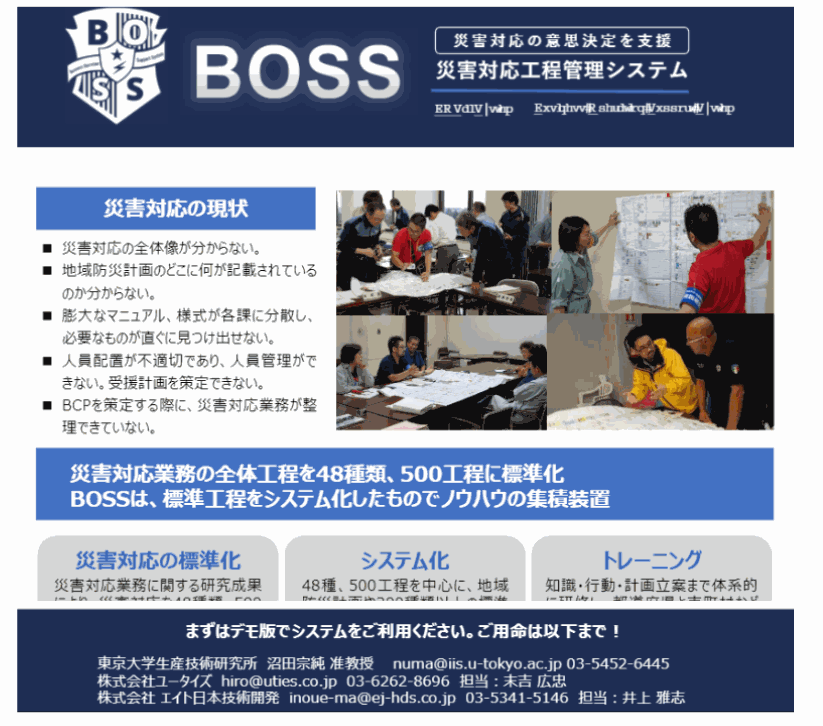
What led to the establishment of the Disaster Management Training Center? Can you tell us about the events that led to the use of learningBOX?
Originally, I studied all kinds of disaster countermeasures in my laboratory.
For example, in everyday work, if you do the same job over and over again to some extent, you will learn the daily tasks. However, in the case of a disaster, even if the same disaster occurs, the people who respond to the disaster change, and the government also changes its staff rapidly, so most of the people who respond to the disaster are experiencing it for the first time. As a result, it is difficult to see the big picture and know what to do, which is why disaster response is not always successful.
So, first of all, let's make a flow that gives a complete picture! We thought, "Let's make a flow so that we can see the whole picture," and now we are systemizing it as BOSS and introducing it to various local governments, but we felt that if that was all we did, we would not be able to respond when a disaster really happened. Training and education must be well developed. So, I wondered what training and education was like in Japan today. There are training programs offered by the Cabinet Office, Ministry of Internal Affairs and Communications, Ministry of Land, Infrastructure, Transport and Tourism, etc., but they are all packed with how-to information in a short period of time. But that's not enough time to study, and there's no time to think deeply. The e-learning system in the U.S. is also very comprehensive! Especially the videos. There's a lot of training that takes place over the span of a month or two. So we were thinking about whether we could create a new educational system that would allow working adults to think properly and continue to learn... and that's when we started the Disaster Management Training Center. That's why we started this training center. There was some talk about expanding the education to national training programs, but it would be very difficult and require specialists. I thought that would be a bit of a hurdle, so I decided to make it a university program! That's why we decided to make it at the university. It's not that the government doesn't do anything at all, but there are people who are not only government employees, but also private companies, NPOs and other volunteer groups, etc. However, we couldn't expand the scope of the program any further, so it was a bit difficult from the government's standpoint. So we decided to set up the Disaster Management Training Center in order to supplement the national government's position, and also because there was no system in place to draw up an overall picture and teach the whole picture to a large number of people, including government officials, businesses, local residents, NPOs and volunteer groups. So we decided to set up a disaster preparedness training center to educate people.

In this context, people can only move when they have knowledge as input through experience. You can't move if you don't have any knowledge. About two years ago, we held several training sessions at a closed school in Minami-Izu, Shizuoka Prefecture, where we piled up rubble, processed it, and operated an actual evacuation center in the gymnasium. Using the body to actually experience things can be done as long as there are instructions, but what is more important is the ability to input basic knowledge and think. On the other hand, if you have that in place, you can be very effective in terms of actually doing and using what you've thought about, just by including a little experience as an added bonus. For example, if you don't have any knowledge about how to use the equipment, try it first! If that's the case, you learn how to use the equipment, but it's hard to think about why you're using it, how to make it better, and other things that will lead to the next step. Therefore, it is effective to have the basic knowledge as input and then let the students experience it. However, since we need to learn all 47 types of inputs, it's not enough to have a one- or two-day training session, listen to the lecturer, and be done with it. When I thought about how to create a system that would teach everything from the basics to the applications in stages, and how to teach them in order, I thought, "Let's use e-learning! I thought, "Let's use e-learning. By doing so, you can study anytime, anywhere, and it's inefficient to go all the way to Tokyo from all over Japan, listen to a classroom lecture, and then go home... including the travel time. That's why we came up with learningBOX, to see if we could make better use of e-learning.
Thank you very much! You mentioned that you researched overseas training programs. What kind of content is available in overseas disaster management training programs?
The United States has an agency called FEMA, the Emergency Management Agency, and the government is responding to various training programs throughout the United States, so they have created a consortium to think carefully about educational programs. We have spent a lot of money and time to create the educational programs, and they are very comprehensive. In order to spread all the training throughout the U.S., seven universities and other organizations are members of the consortium, and the government assigns responsibilities to the universities and organizations. The University of Hawaii is in charge of earthquakes and tsunamis, Texas is in charge of fire and firefighting, and so on. The universities that are assigned to these roles provide training for their educational programs throughout the United States. In Asia, there is an administrative agency called the National Disaster Management Agency in Indonesia, which is building a national disaster management training center, including accommodation facilities. The hardware can probably be developed in Japan, but the key point is that President Joko's vision is to make Indonesia the world's best training center for disaster management, and he is working to enhance the content of the training center to attract people from all over the world to come to Indonesia for training. President Joko is working toward this vision. On the other hand, in Japan, each organization conducts various training programs on its own, but there is no coordination as an educational program among the various organizations and groups.
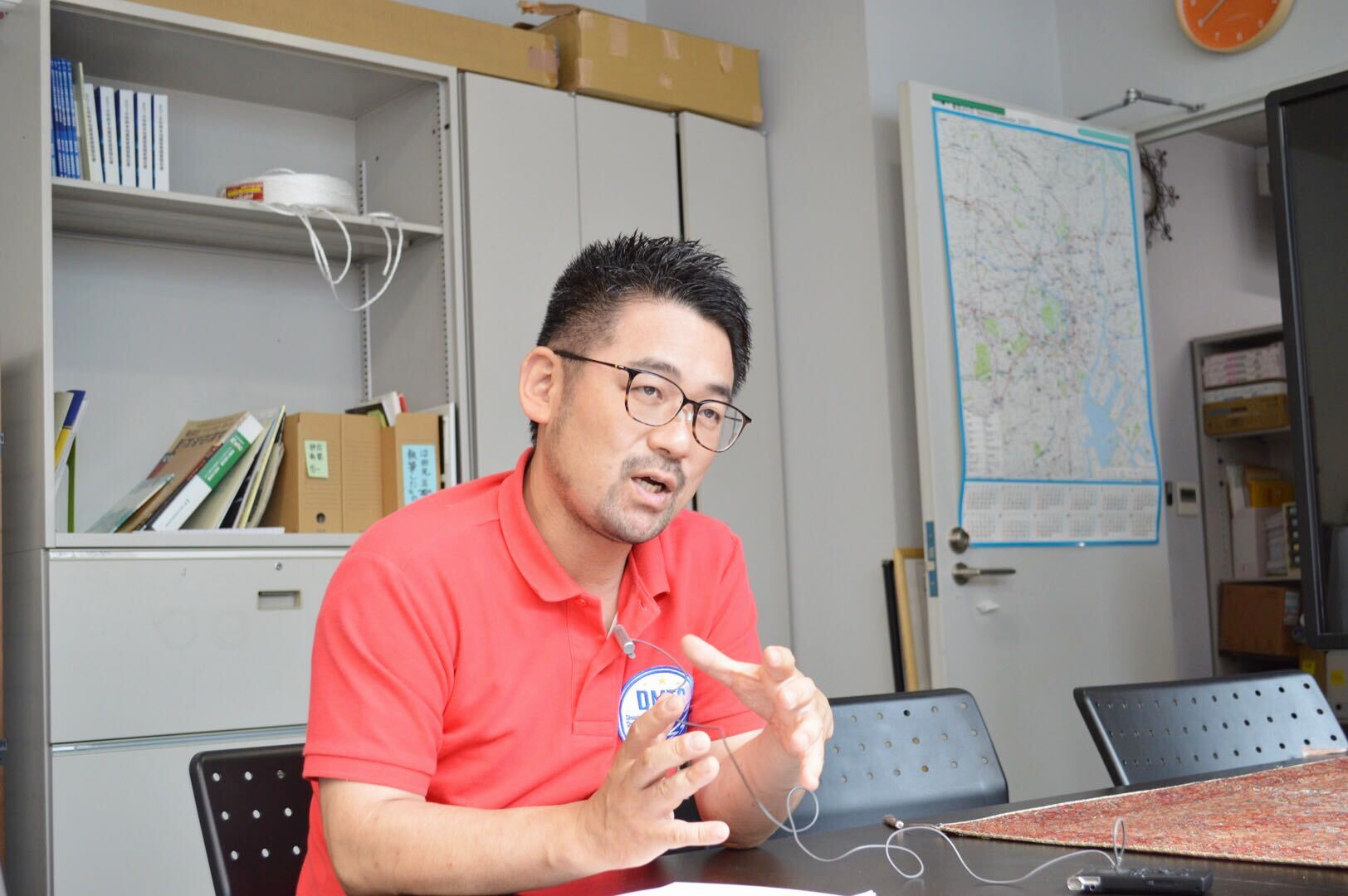
The reason why both the United States and Indonesia have such a training plan is that they have a system of basic kata for disaster response. I believe that disaster response is a form of karate. It is a basic form for dealing with disasters. Because there is a basic kata, even if an unexpected disaster occurs, the basic kata can be updated and applied. If we don't have a basic model, we can't respond to applications... Japan lacks a common model. There are about 170,000 evacuation centers all over Japan, but there is no common information tool among all the evacuation centers. If there is a common system for the whole country, then all local governments will be able to use the same tools to collect information. The main point is that there is no system in place to develop tools for collecting information, to provide training to verify the tools, and to prepare for actual disasters. In Japan, when there is a major disaster, support staff come from all over the country to help. However, everyone prepares different things and thinks differently. In the absence of a common concept of how to respond, support staff with individual experience come to the aid of the disaster victims, and it is often difficult for the recipients of the support staff to come to terms with their wishes. I would like to implement disaster countermeasures more efficiently by incorporating past disaster experience into a 'model' and sharing the incorporated know-how with everyone. In the future, if information sharing tools become an application world, it will be the same if the language is changed. If that happens, we can talk about international standardization.
Thank you very much for the details! You said that you searched for e-learning for off-JT, how did you find learningBOX?
I wonder how it went...? (laughs) There are so many companies that deal with e-learning if you look for them, aren't there? I honestly felt that there were so many different types that I didn't know what to expect. While I was still confused, you came to our laboratory to explain about it. When we discussed what we wanted to achieve using e-learning on the spot, he responded to all of our requests, which was very important. Moreover, they responded immediately, didn't they? We were really grateful. The other big thing is the functionality. I also placed importance on the fact that I could set up settings such as not being able to download teaching materials and videos.
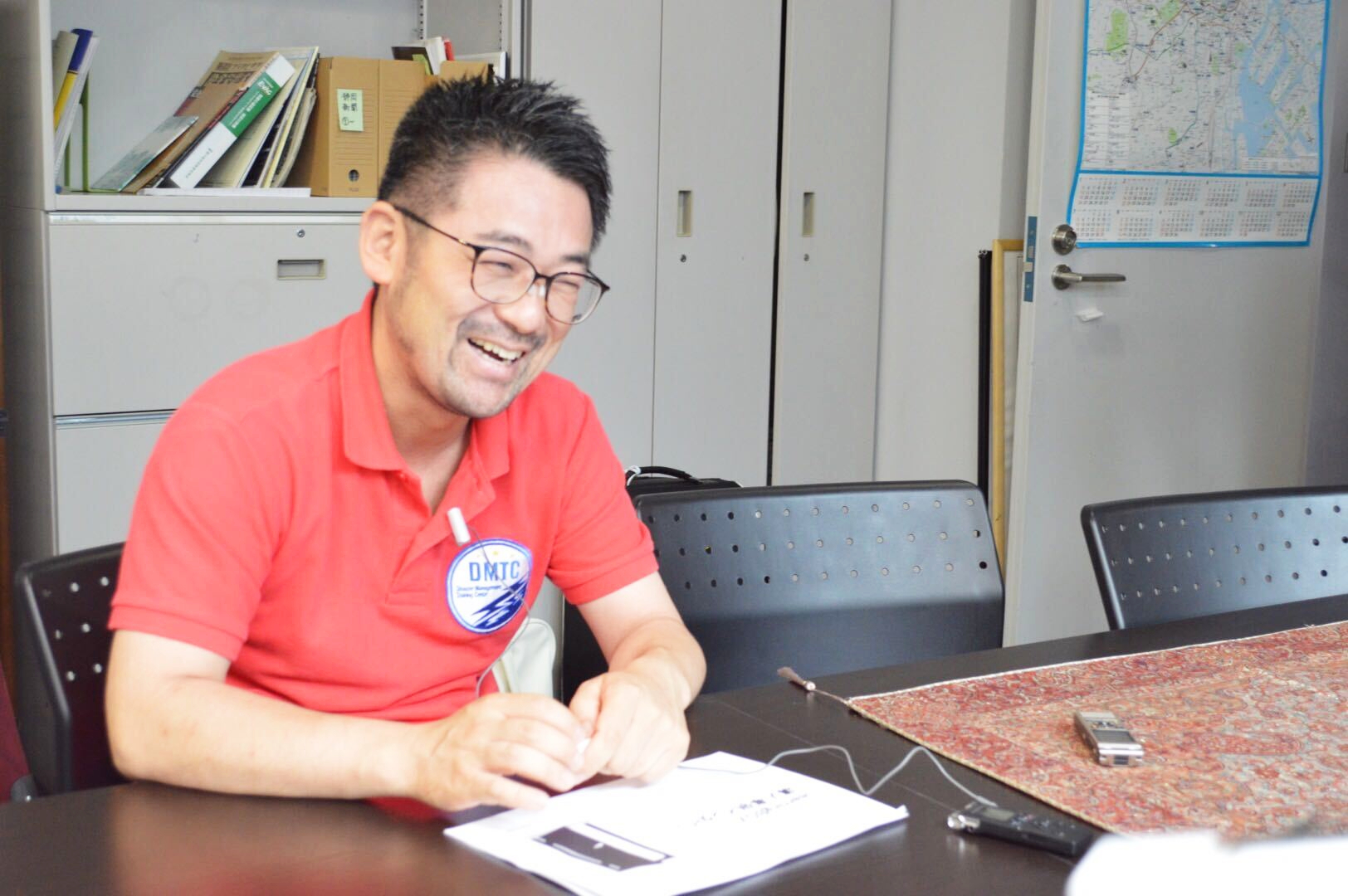
Have you considered other e-learning systems?
I did. I wanted to use leaningBOX after you visited me for the first time, but other people were also suggesting other services too. But I didn't think that the functions would make a big difference. I think the most important thing is the human aspect, you were flexible and fast to respond to the requests from us. I like the good support you are offering! Of course, it's easy to use and the functions are good too.
Thank you for your kind words! ...Can you tell us how you are actually using learningBOX?
Of course it's good!
Right now, we are using it for the Ministry of Internal Affairs and Communications (MIC) and Tokushima Prefecture's General Agency Disaster Management (GADM) training.
I felt this while actually creating the content, not comparing it to others... but it is really easy to use. Let me briefly describe the MIC GADM training environment.
First, log in and click on "Study" to display a dedicated folder. When you open the folder, you will be able to check the course materials. There, you will find a page called "Guidance," which will thank you for attending this lecture and provide an overview (objectives, what we want you to learn, the flow of the course, etc.).
Next, we ask participants to complete a questionnaire to reconfirm the significance of attending this training. For example, if you were asked "What kind of work do you want to do in disaster management? I want to help the residents! Then, we ask them to reorganize that vision and write down "Why did you participate in this course? After that, we have a report assignment for them to fill in what they learned from the video. The total training content is 50 minutes long, and the set also includes a reference video for you to review later at your discretion.
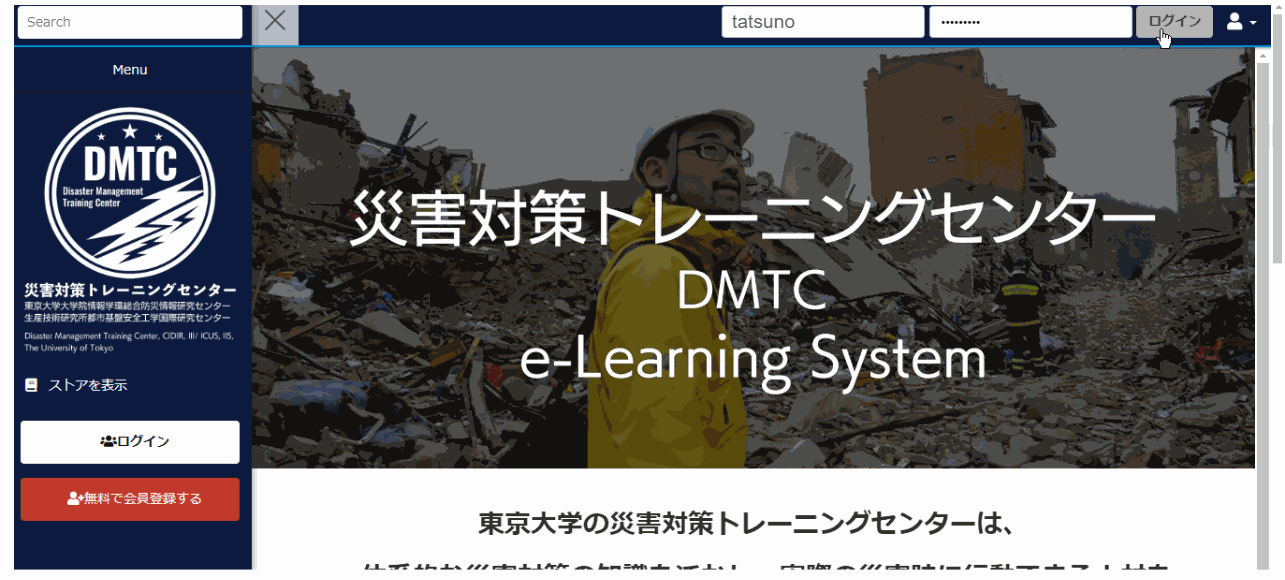
In Tokushima Prefecture's GADM training program, you are required to check five videos and answer each questionnaire. For example, in this Q4, you will be asked to fill out your own simulation of the key points of 47 different disaster response operations.
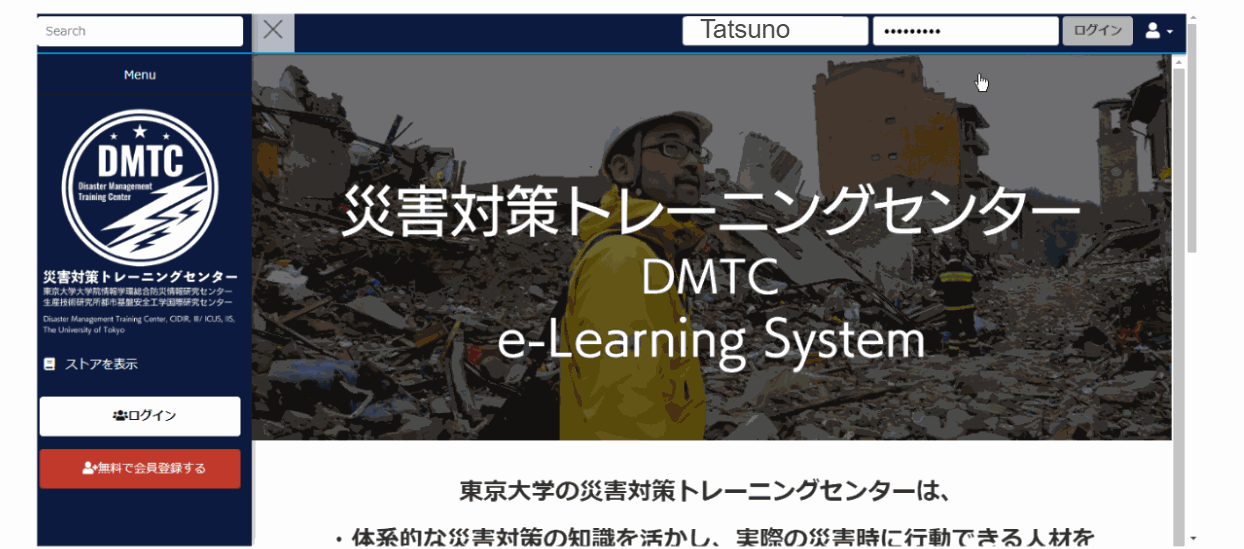
The content currently available at the Disaster Preparedness Training Center is a step-by-step content course: basic, beginner, intermediate, and advanced. We have divided the files by the teacher in charge (currently about 20 teachers), and we are creating a training program mainly using videos.▶learningBOX EC function use
The advanced content of the program is designed to train people in positions of decision-making authority as leaders in disaster response, if they are in a company. We hope to start the basic course by the summer. We would like to start the basic course first, and then incorporate disaster management training as part of the training for young corporate staff.
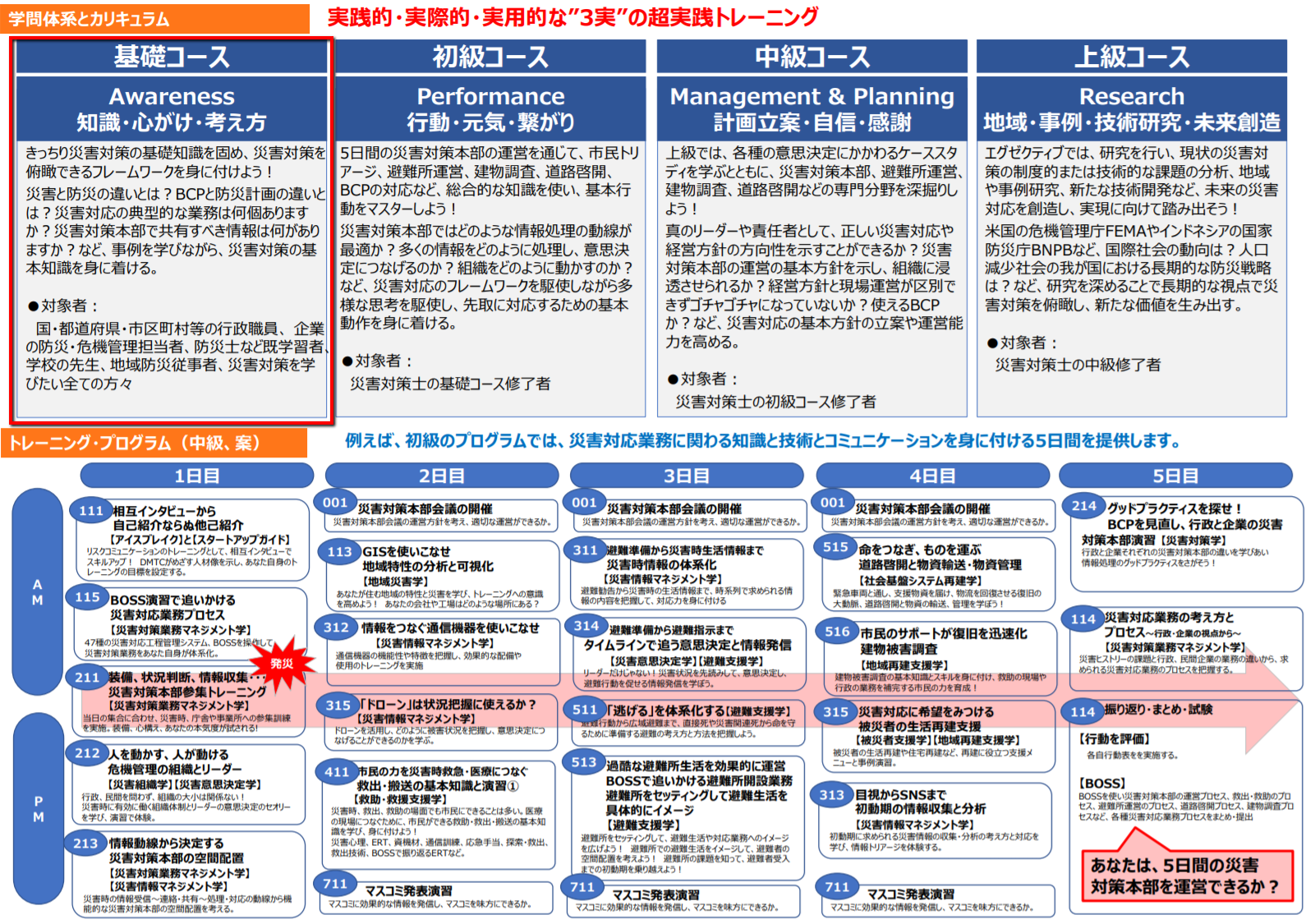
We are planning to sell a set of Basic Disaster Management Training Course + 5 online courses on BCP (Business Continuity Plan)!
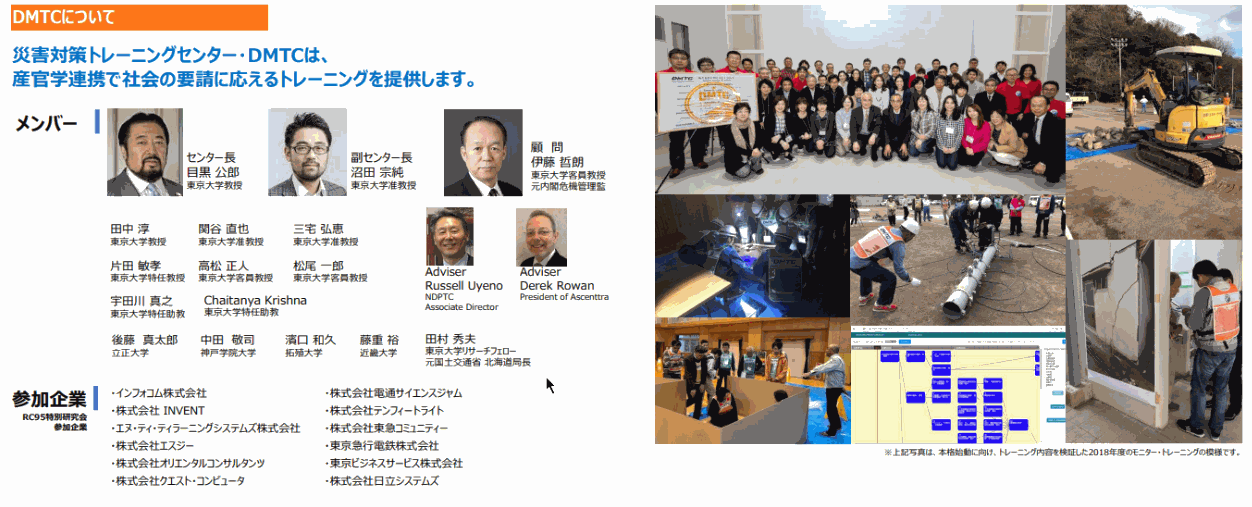
What do you expect from learningBOX in the future?
I'm happy enough with the current situation. (Laughs)
I would venture to say that you make a lot of videos, but you upload and distribute the files separately by theme. It would be nice if this could be done by entering words of interest, and related materials would automatically appear as a combination of recommendations. Now all we need is an English version!
postscript
How did you like this case study?
In Japan, where so many disasters occur that the country is called a disaster-prone country, I felt that Dr. Numata's research, which began with defining "kata," the basic type of disaster, is indispensable for Japan today.
We are proud that our learningBOX can contribute to disaster management training, even if only a little, and we will put even more effort into its development!
Dr. Numata, thank you very much for taking time out of your busy schedule to speak with us.
*Please contact us if you wish to introduce Basic Disaster Preparedness Training as part of your new employee training program. This service is also available to individuals.


